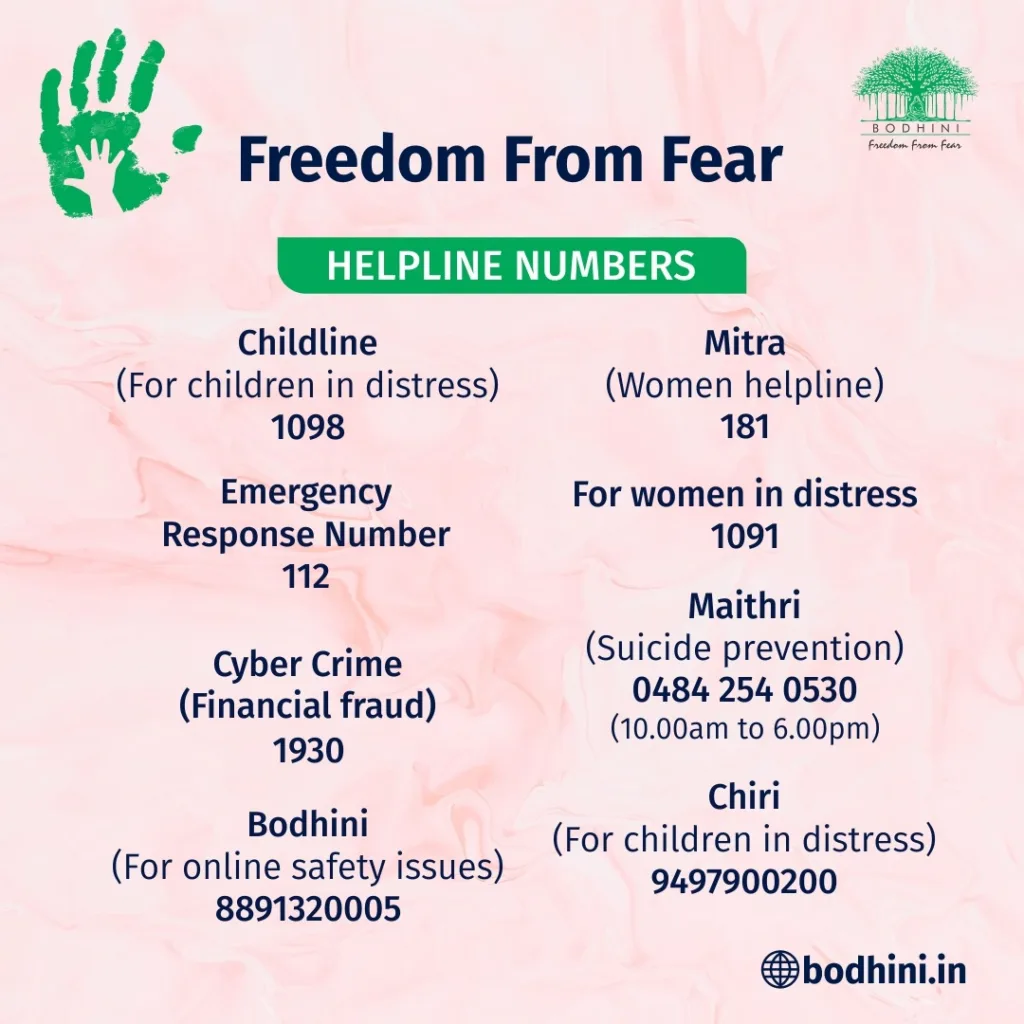Online Threats, Suicide, and How to Help
Every day, people make the difficult and extreme decision to end their lives, for varying reasons. According to the National Crime Records Bureau, 1,64,033 people committed suicide in India in 2021, a 7.2% increase from 2020. The major causes for suicide were family problems and illness, accounting for 33.2% and 18.6% of total suicides respectively. Other issues included drug abuse/alcohol addiction (6.4%), marriage related issues (4.8%), love affairs (4.6%), bankruptcy or indebtedness (3.9%), unemployment (2.2%), failure in examination (1%), professional/career problem (1.6%), and poverty (1.1%). In addition, the International Institute for Population Sciences found that the suicide rate among men is 2.5 times higher than that among women.
Stressful situations sometimes cause tunnel vision where ending one’s life may seem like the only way out. The distress does not end there, though, and can often result in a vicious cycle. Failed attempts can leave the person injured or have life-long health consequences, further increasing risk. Loved ones left behind, known as survivors of suicide, experience grief, anger, depression, or guilt, and may become at risk for suicide themselves.
Genetic factors, too, can play a role in suicidal thoughts and behaviours. Studies have found heritability estimates of suicidal thoughts and behaviour that range from 30% to 50%. Research findings based on genomic sequencing have been able to tie suicide risk to genes associated with schizophrenia, autism, major depressive disorder, and bipolar disorder. Yet other studies suggest that these genes run in families and can be transmitted independent of psychiatric comorbidities, with an increased rate of suicide attempts in first degree relatives of suicide victims compared to those of non-suicidal subjects.
This World Suicide Prevention Day (September 10), we discuss ways to identify people in your life who are at risk, and how you can reach out to them.
Warning Signs
Suicide is rarely the result of one event, but the outcome of consistent pressures, often in more than one sphere of life. Although you may never know what might cause a friend or loved one to commit suicide, there are some common characteristics that you can look out for. Check in on your friends who may be going through troubling times. These could include previous suicide attempts, a history of depression or other mental illnesses, serious illnesses or long-term pain, legal problems, financial issues, impulsive tendencies, history of abuse. Further, if your friends are being bullied, have lost a family member or dear one to suicide, or are experiencing discrimination or social isolation, they might need your attention, especially if there is a family history of suicidal ideation or behaviours.
Some of the common warning signs to look out for include:
- Consistent sadness or moodiness
- Displaying reckless or self-harmful behaviour
- Losing interest in previously important activities
- Withdrawal from social interactions
- Sudden calmness after a prolonged period of erratic moods
- Changes in personality or sleeping patterns
- Increased substance use
- Making preparations, saying goodbyes, and giving away possessions
- Talking about wanting to die
By being aware of and recognising some of these warnings, and providing appropriate support, you might be able to save a life.
Risks associated with internet use
Interactions on the internet have the potential to increase risk for suicide as well. Instances of sextortion, cyber-bullying, or other forms of abuse over the internet are playing an increasing role in creating emotional distress that could result in tragic outcomes.
Cyber-bullying has led to increased suicide numbers, resulting in a newly termed phenomenon, cyberbullicide. As a subclass, it describes suicides that are directly or indirectly influenced by online bullying or aggression. Cyberbullying may take many forms, including embarrassing or hurtful comments or photographs being posted online or sent to the victim, rumors being spread about the victim online, sexual comments or gestures being posted, threats of harm being sent to the victim, someone pretending to be the victim online, or offensive videos or webpages being posted about the victim in order to demand sexual or other favours. Sextortion is a form of sexual exploitation through blackmail. It can involve sexting, non-consensual sharing of sexual images, online blackmail, and revenge pornography. A 2015 survey found that sextortion was most common on social media sites such as Facebook, Snapchat, and Instagram, with a majority of the victims being minors. In 2021, the FBI received 18,000 reports of sextortion in the United States, leading to over $13 million in bribes. However, the number is believed to be much higher due to the reluctance of victims to report instances of abuse out of fear or embarrassment. India witnesses more than 500 cases of sextortion daily, making it the sextortion capital of the world. However, only 0.5% of these are registered as FIRs. A study found that a threat to post sexually explicit media without consent was associated with higher odds of reporting suicidal ideation. Younger and female respondents reported higher odds of suicide risk and self-harm. While specific data on suicides related to sextortion is limited, between October 2021 and March 2023, the FBI and Homeland Security in the US received over 13,000 reports of online financial extortion of minors, involving at least 12,600 victims, leading to at least 20 suicides.
With the growing functions of AI, deepfakes, where images of a real person are used to create life-like AI-generated images of people, are also becoming common. Children and adolescents are most vulnerable to sextortion as they are unaware of the consequences of the information they share on the internet or of recourses available, and therefore easier to manipulate. The stigma associated with sexual content also puts vulnerable individuals at greater risk. The emotional and psychological effects of sextortion, involving fear, helplessness, shame, and general distress can sometimes push individuals to suicide.
Problems associated with gaming that may sometimes result in psychological distress and impulsivity, which in turn may increase the likelihood of suicidality; one of the connecting variables being escapism. Multi-player online video games can also become the site of bullying, with peer aggression sometimes aggravated by poor performance at a game. Online suicide games or groups, that entice vulnerable individuals with mundane tasks that eventually culminate in fatalities have also surfaced in recent years, posing a risk not only to these individuals, but to those around them.
It becomes essential, given emerging circumstances, that parents remain vigilant and ensure the safety of minors and adolescents as they use the internet.
Helping yourself and others
If you recognize any of these signs in yourself or a loved one, do not discount the feelings associated with these thoughts. Take these thoughts seriously and address them. The easiest way to ascertain risk in another may just be to ask them if they’re having suicidal thoughts. Sometimes they just need to know you care and that they are not alone in what they are experiencing. The stigma associated with suicide and mental illness often prevents people from talking about it or the underlying causes. If you recognize these signs in yourself, call a helpline or see a mental help professional; encourage your loved one to do the same. To this end, Aasra has compiled a directory of helpline numbers that one can use. Other steps to overcome suicidal ideations could include establishing a support network; this could include friends and family, your place of worship, support groups, or other community support systems.
If someone appears extremely distressed, do not leave them alone. Call for help and ensure the person is supervised until they calm down or the moment of crisis has passed.
Article By,
Gauri Anand

For more resources on the following topics:
- For reporting cybercrimes, visit : https://cyberdome.kerala.gov.in/reportus.html
- For warning signs of online abuse, visit : https://www.bodhini.in/warning-signs-of-online-abuse/
- For saving evidence on cyber attack, visit : https://www.bodhini.in/saving-evidence-on-cyber-attack/
- For registering a cyber complaint, visit : https://www.bodhini.in/registering-a-cyber-complaint/
- For dealing with online threats and blackmail, visit : https://www.bodhini.in/dealing-with-online-threats-blackmail/
- For relationship trends and mental health, visit : https://www.bodhini.in/relationship-trends-and-mental-health-issues/
- For digital wellbeing. visit : https://www.bodhini.in/digital-wellbeing/
- For loneliness, visit : https://www.bodhini.in/finding-strength-in-loneliness/
- For stress busters, visit : https://www.bodhini.in/stress-busters/
- For sleep, visit : https://www.bodhini.in/sleep-our-secret-weapon/
